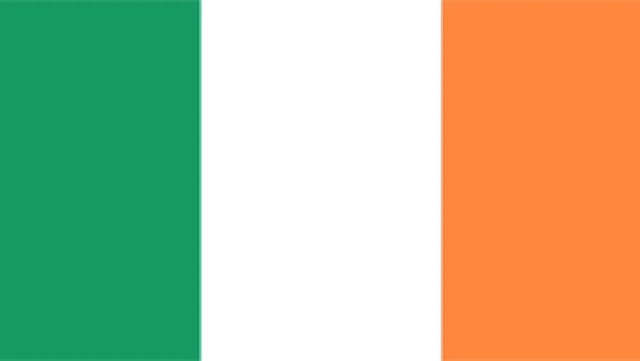
Geography
Area : 70,280 km²
Borders : 360 km (with United Kingdom)
Coastline : 1,448 km
Capital : Dublin
Official language : Gaelic, English
Flag

Population
Population : 5,233,461 inhabitants (2024)
Crude natural change rate : 3.9‰ (2023)
Population repartition: 18.6% of under 15 years old, 15.8% of over 65 years old (2024 est.)
Foreign residents: 7% EU nationals, non-EU nationals 6% (2021)
Crude net migration rate: 5.6‰ (2024)
First time asylum applicants: 13,275 (2023)
Life expectancy: men 80.3 years, women 83.9 years (2024 est.)
Religions: Roman Catholics 68.3%, Church of Ireland 3.8%, Orthodox 2%, Other Christians 0.9%, Muslims 1.4%, Other 1.6%, No religion 15.4%, unspecified 6.6% (est. 2022)
Source : Eurostat, CIA World Factbook
Economy
Currency: Euro
GDP: € 562,794.2 million (2024)
GDP per capita (PPS): € 88,600 (2024)
GDP growth : 2.6% (2024)
Inflation: 2.7% (October 2025)
Public debt: 40.9% of GDP (December 2024)
Unemployment: 5.9% (October 2025)
Stock of foreign direct investment from the entire world: 380.6% of GDP (2022)
Budget balance: 4.3% of GDP (December 2024)
Source : Eurostat
Political system
Democratic republic, bicameral parliamentary regime
Head of State Catherine Connolly (Independant) since 11th November 2025
Prime Minister (Taoiseach) Simon Harris (Fine Gael) since April 9th 2024, following the announcement of Leo Varadkar's resignation on March 20th 2024. Following a political threeparty agreement from June 27th 2020, the Irish government is composed of the Green Party, Fianna Fáil and Fine Gael.
Bi-cameral legislative system: the Dáil Éireann (House of Representatives), made up of 158 members who are elected for five years by direct universal suffrage the Seanad Éireann (Senate), of which 60 members are either elected by indirect universal suffrage or are appointed by the Taoiseach (Prime Minister)
Political representation
Composition of the House of Representatives (in January 2024):
- 37 seats FF (Fianna Fáil)
- 36 seats SF (Sinn Féin)
- 34 seats FG (Fine Gael)
- 22 seats Independant
- 12 seats GP (Green Party)
- 7 seats LP (Labour party)
- 6 seats Social Democrats
- 5 seats PBPA (People Before Profit Alliance)
- 1 seat Aontú
Composition of the Senate (43 members elected by professional panels, 11 members nominated by the Prime minister, 6 members elected by the universities):
- 21 seats Fianna Fáil
- 16 seats Fine Gael
- 11 seats Independent
- 5 seats Labour Party
- 4 seats Green Party
- 4 seats Sinn Féin
Women's representations
- in government: 4/15
- in the Dáil Éireann : 36/160
- in the Seanad Éireann : 24/60
Next Elections:
On The Same Theme
Country Sheet
Country Sheet
Country Sheet
Country Sheet
Country Sheet

Country Sheet

Country Sheet

Country Sheet


